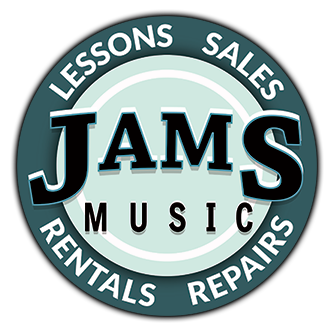Product Pricing
We believe that everyone should have access to music and instruments, regardless of budget. We carry instruments at every price point, so you can find exactly what you need at a price that works for you.
Pricing varies depending on manufacturer and features. Prices indicated only represent rough ranges, and not specific product pricing. Contact us or shop online at our Reverb store to see pricing per product.
Guitar/bass Pricing
Nylon String Acoustic: Pricing for nylon string acoustic guitars ranges from $130 - $1300.
Steel-String Acoustic: Pricing for steel-string acoustics can vary from $199 - $5,000+. Beginner steel-string acoustic guitars typically sit at the $199 - $699 price range. Intermediate steel-string acoustics can vary from $699 - $1,999. Higher end steel-string acoustics start around $1,999 and can go up to $5,000 and above.
Electric Guitar/Bass: Electric guitar/bass prices start at $179 and can reach $3,000 and above. Beginner electric guitar/bass prices vary between $179 - $899. Intermediate electric guitars/basses typically can vary from $899 - $2,000+. Higher end electric guitars/basses start around $1899 and can reach $5,000 and above.
Guitar Amplifiers: Beginner guitar amp prices start at around $199 and go up to $499 for solid state amps. Intermediate and higher end tube amps start at $599 and can reach $2,000 and above. Guitar cabinets can vary from $379 and can reach $1,000 and above.
Bass Amplifiers: Beginner bass amps are $99 - $499. Intermediate and higher end bass amps start around $499 and can go up to $1,000 and above. Bass cabs are between $499 and $1,000+.
Amplifier Pricing
Brass/woodwind product pricing
Flute: Student-level flutes start at $579 and go up to around $1000. Intermediate flutes range from $1,000 to around $2,000. High end flutes start around $2,000+.
Bb Clarinet: Student-level clarinets start around $699 - $1,000. Intermediate clarinets range from $1,000-$2,000. High end clarinets start at $2,000 and go up.
Eb Alto Saxophone: Student-level saxophones start around $1,000 - $1,499. Intermediate saxophones range from $1,499 - $2,000. Higher end saxophones begin at $2,000 and go up.
Bb Trumpet: Student-level trumpets start at $799. Intermediate and high-end trumpets begin around $1,499 and go to $4,000+.
Bb Trombone: Student-level trombones start at $799. Intermediate and high-end trombones begin around $1,499 and go up.
Orchestral instrument Product pricing
Violin: Student-level, full-size violin outfits (including case and bow) start at $430. Intermediate full-size violin outfits begin around $799.
Viola: See Violin pricing.
Cello: Student-level, full-size cello outfits begin around $999 and go up.
Why pay more for an instrument?
When you grow as a musician, what you need from you instrument grows too. You can improve your overall playing experience and excel quicker when you have the right tools for the job.
Price points of instruments usually directly correlate with the features offered. Build quality can also increase, although we ensure that all of our budget options carry good build quality. Here at JAMS, we only carry brands and products that we ourselves would love to play, so you can feel confident in our expertise and recommendations.
For guitars and basses, the quality of the woods and metal components increases when the price increases. Tuner gearing ratios become better, ensuring easier and more stable tuning. Pickups and electronics are more consistent and the components of these parts are higher quality. Fretwork and fret material gets better, as well as nut material. Neck finishes, rolled fingerboard edges, body contours, neck construction, and finishes are all appointments that can increase with price as well. Higher priced instruments not only sound better, but will last longer with proper care, and feel more comfortable to play. Instruments constructed in the United States are more expensive by default; however, consistency and craftsmanship are often benefits of these instruments. Features and appointments vary by brand.
For brass and woodwind instruments, the quality in building material is an important factor in durability, playability, and fixability. Cheaper instruments means cheaper materials, which will break easily, and not respond well to, or retain, the repairs performed on them.
For orchestral string instruments, an important factor in quality of an instrument is fingerboard and tuning peg material. Most cheaper violins, violas, and cellos will have a porous, painted wood as the material for the fingerboard and tuning peg. This porous wood absorbs the oils from our hands easily, and warps, snaps, and strips easily. The student level violins that we carry here only have ebony boards and tuning pegs. Ebony is a much harder, non-porous wood. This wood will not absorb oils as easily, and retains it’s shape over the lifetime of the instrument. As you pay more for an orchestral string instrument, the wood quality, varnish, and internal bracing all improve. They are strung at the factory with better strings as well. Craftsmanship and consistency improve, and there are more components that become handcrafted as the price increases.
